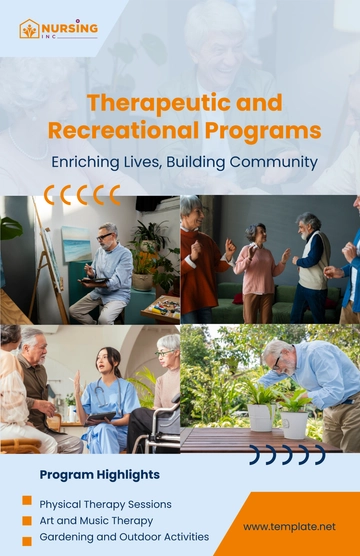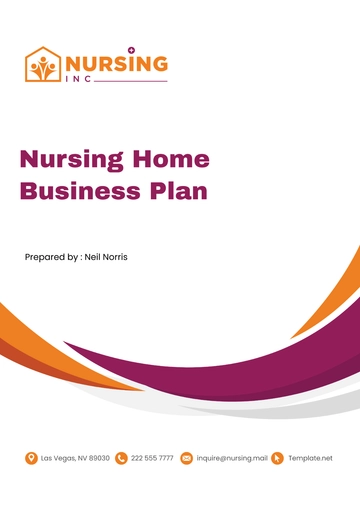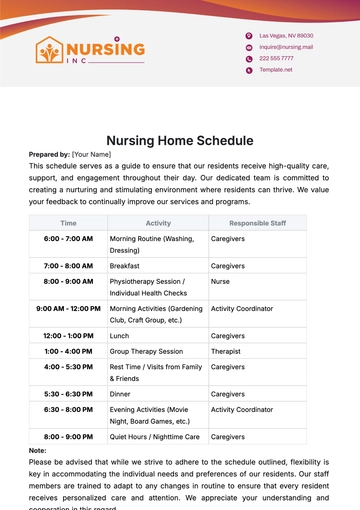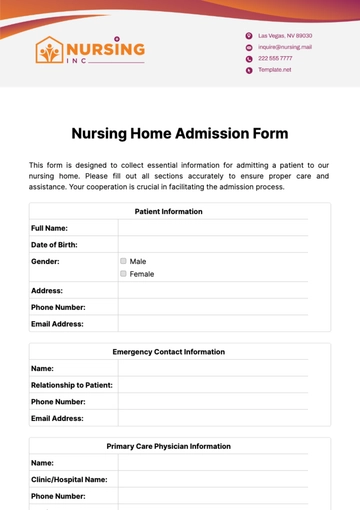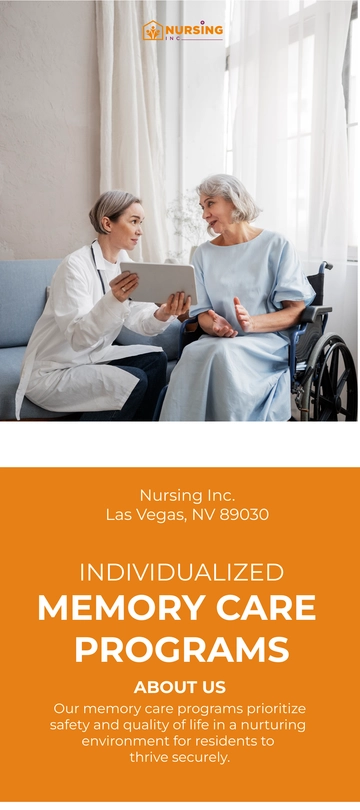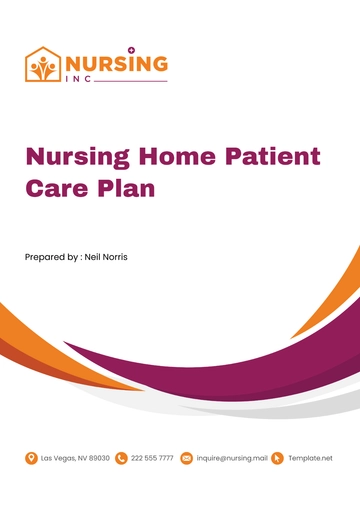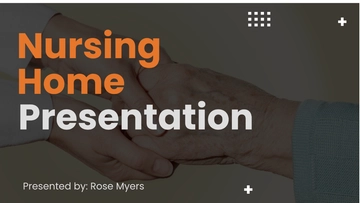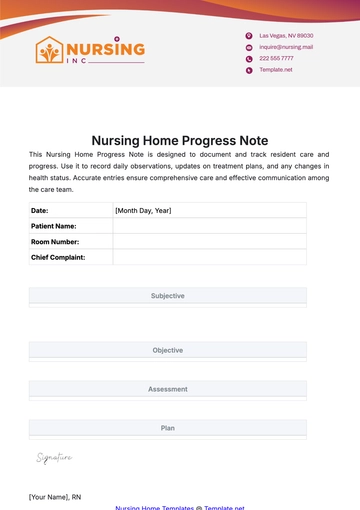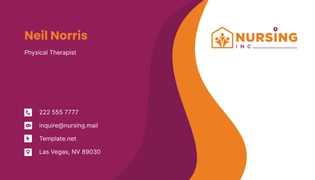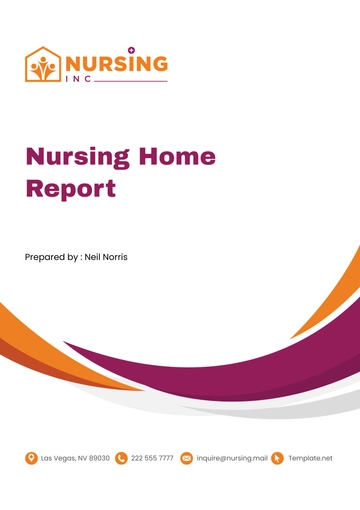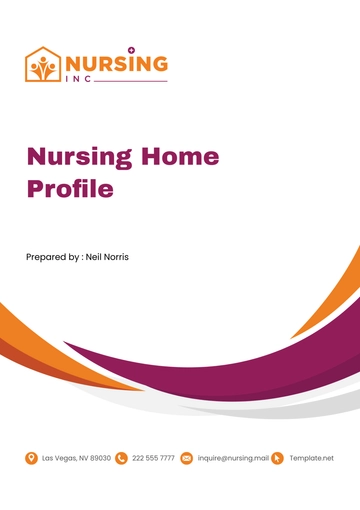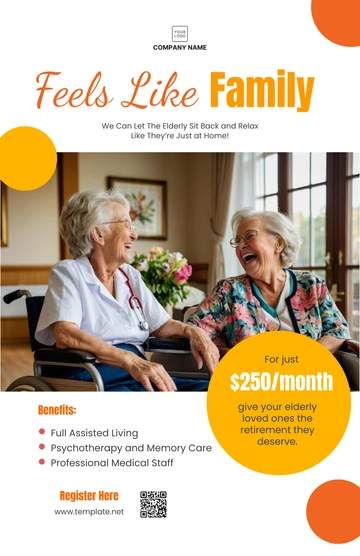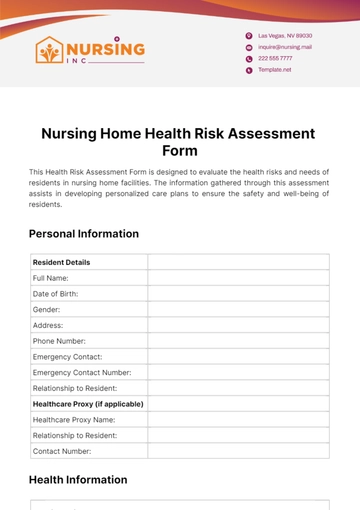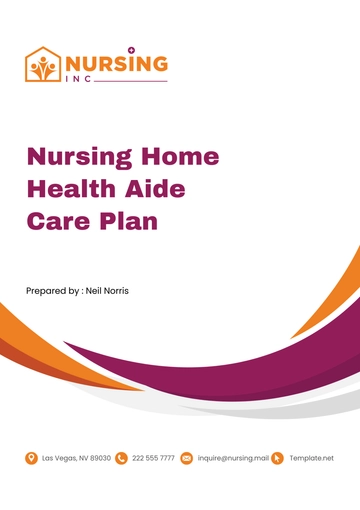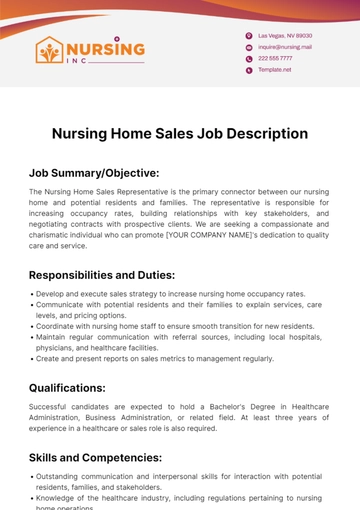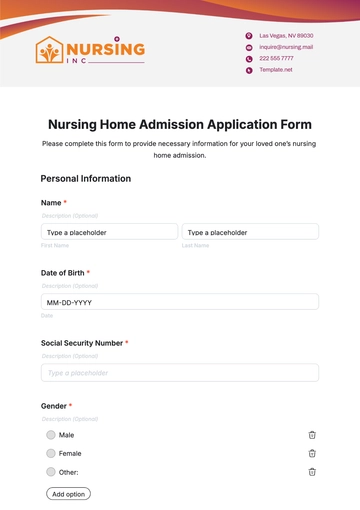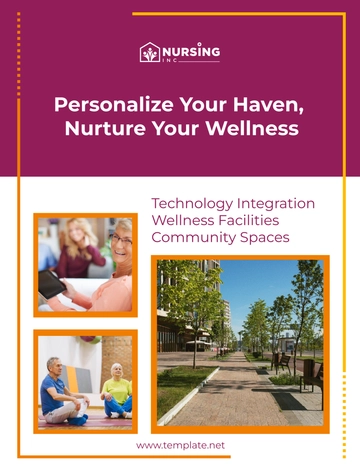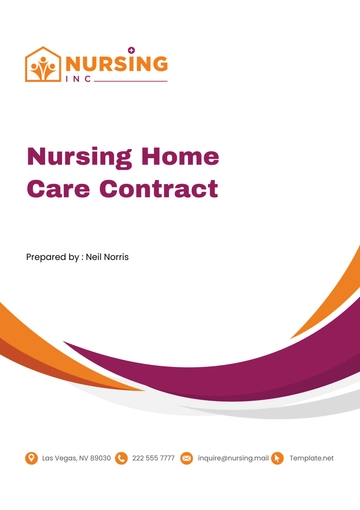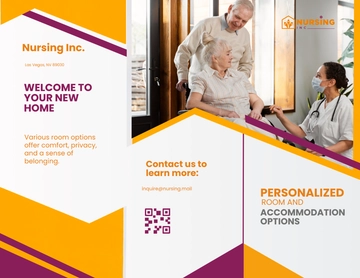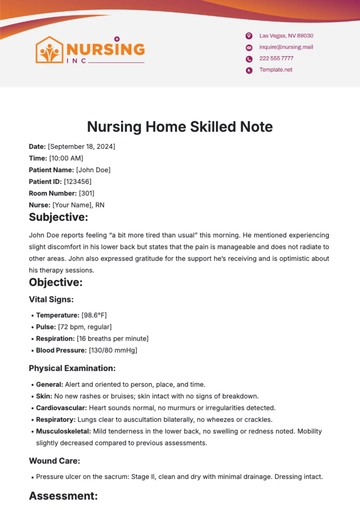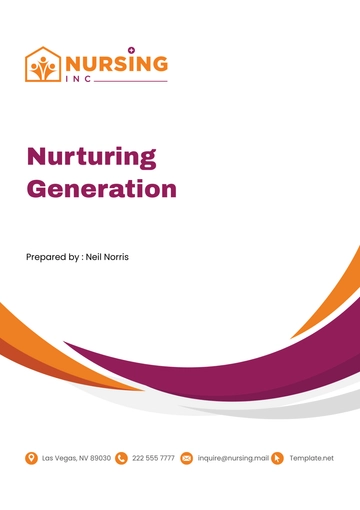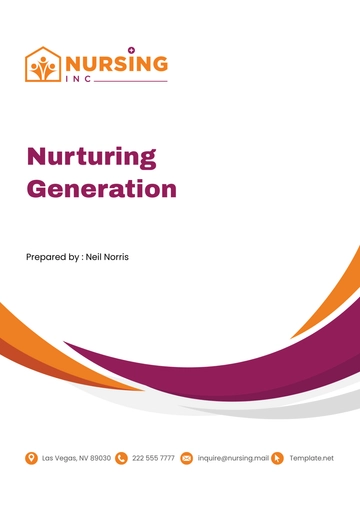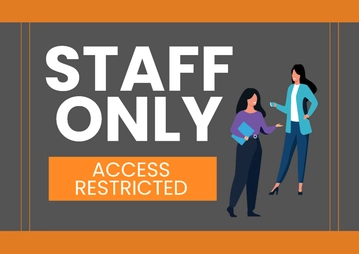Free Nursing Home Long-term Strategic Compliance Planning Document
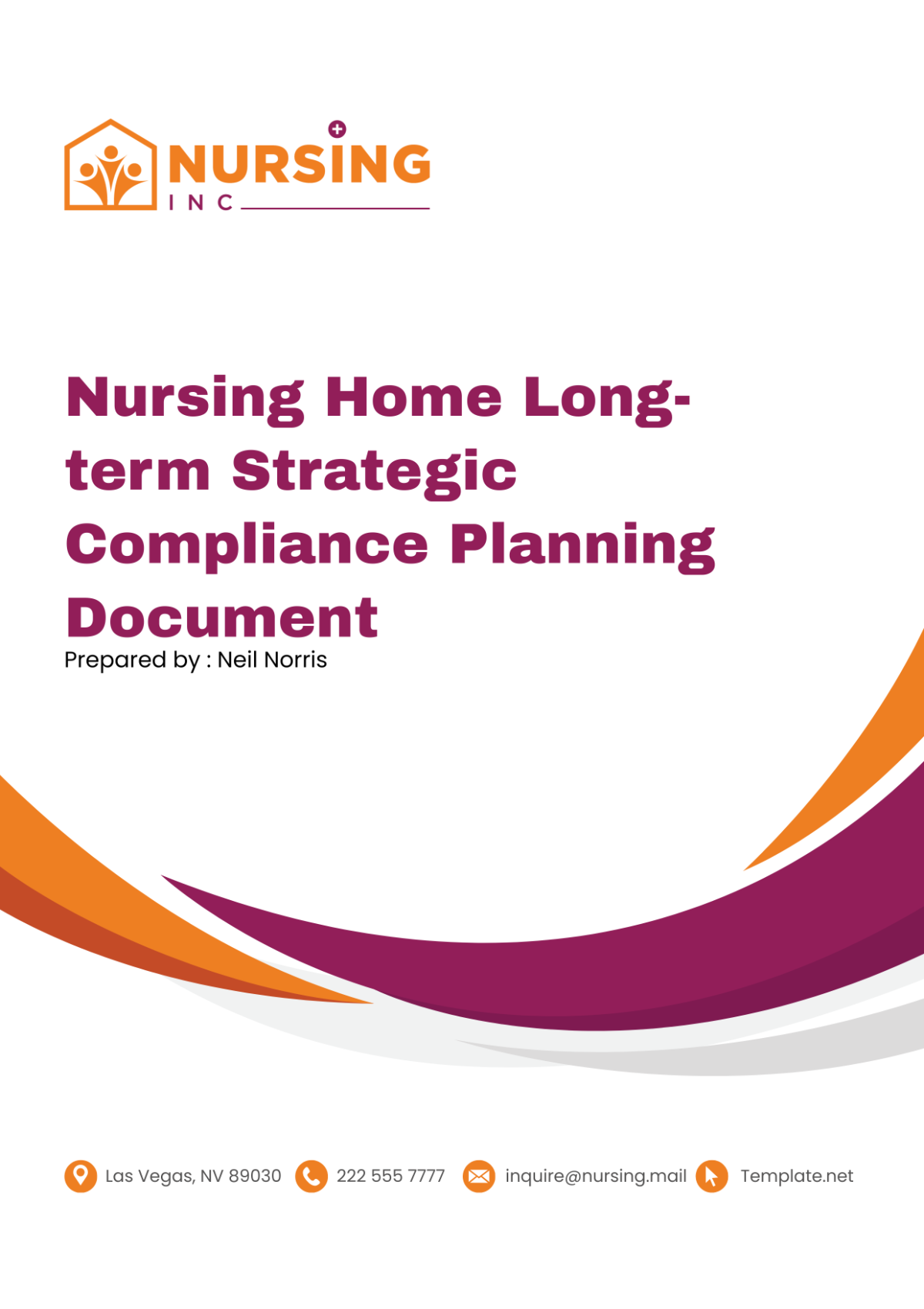
I. Introduction
A. Overview of the Nursing Home Facility
Welcome to [Your Company Name], a premier skilled nursing facility dedicated to providing compassionate care and support to our residents. Established in [Year], our facility has been serving the [Region] for [00] years, offering a wide range of services tailored to meet the diverse needs of our residents.
B. Purpose and Scope of the Document
The purpose of this Nursing Home Long-term Strategic Compliance Planning Document is to outline our facility's strategic approach to ensuring compliance with regulatory requirements, maintaining high standards of care, protecting resident rights and dignity, managing risks effectively, achieving financial sustainability, and continuously improving our operations. This document serves as a roadmap for our staff and stakeholders to uphold our commitment to excellence in care delivery and regulatory compliance.
C. Statement of Commitment to Compliance and Quality Care
At [Nursing Home Name], we are committed to providing the highest quality of care to our residents while adhering to all applicable laws, regulations, and industry standards. We recognize the importance of compliance in safeguarding the health, safety, and well-being of our residents and pledge to maintain a culture of integrity, transparency, and continuous improvement in all aspects of our operations.
II. Regulatory Compliance
A. Overview of Regulatory Framework
Our facility operates within a complex regulatory environment governed by federal, state, and local regulations, including but not limited to those set forth by the Centers for Medicare & Medicaid Services (CMS), the State Department of Health, and other regulatory agencies. These regulations encompass a wide range of areas, including resident care, staffing, infection control, quality reporting, and facility operations.
B. Compliance Responsibilities and Accountability Structure
To ensure compliance with regulatory requirements, we have established clear roles and responsibilities within our organization. The Administrator is ultimately responsible for overseeing compliance efforts and appoints a Compliance Officer to lead compliance initiatives, monitor regulatory changes, and coordinate compliance activities across departments. Department heads and staff members are responsible for understanding and adhering to relevant regulations within their respective areas of operation.
C. Processes for Monitoring Regulatory Changes and Updates
We maintain processes for monitoring changes and updates to relevant regulations, including regular review of CMS, State Department of Health, and other regulatory agency communications, participation in industry conferences and training sessions, and subscription to regulatory update services. The Compliance Officer is responsible for disseminating information regarding regulatory changes to appropriate staff members and coordinating any necessary updates to policies and procedures.
D. Training and Education Initiatives for Staff Regarding Compliance Requirements
We are committed to providing ongoing training and education to our staff regarding compliance requirements and best practices. New hires receive comprehensive orientation training that includes an overview of regulatory requirements relevant to their roles. In addition, we conduct regular staff training sessions and workshops on topics such as infection control, resident rights, documentation standards, and emergency preparedness to ensure that our staff members are equipped with the knowledge and skills necessary to fulfill their compliance obligations effectively.
III. Quality of Care
A. Staffing Levels and Competency Requirements
Ensuring adequate staffing levels and staff competency is essential for delivering high-quality care to our residents. We maintain staffing levels in accordance with regulatory requirements and industry standards, taking into consideration factors such as resident acuity, census, and staffing patterns. Staff members are required to possess the necessary qualifications, training, and licensure to perform their roles effectively, and we provide ongoing education and professional development opportunities to support staff competency.
B. Policies and Procedures for Resident Assessment and Care Planning
We have established policies and procedures for conducting comprehensive assessments of residents' needs upon admission and periodically thereafter to inform individualized care plans. Care plans are developed in collaboration with residents, families, and interdisciplinary care team members and are reviewed and updated regularly to ensure that they reflect residents' current needs and preferences.
C. Infection Control Protocols and Prevention Measures
Preventing the spread of infections is a top priority at [Your Company Name]. We have implemented robust infection control protocols and prevention measures in accordance with guidelines from the Centers for Disease Control and Prevention (CDC) and other public health authorities. These measures include hand hygiene practices, environmental cleaning and disinfection, use of personal protective equipment (PPE), and protocols for managing infectious diseases outbreaks.
D. Medication Management Policies and Practices
Safe and accurate medication management is essential for promoting resident safety and well-being. We have established policies and practices for medication procurement, storage, administration, and documentation in accordance with applicable regulations and best practices. Our medication management processes include medication reconciliation upon admission, ongoing medication reviews, and staff training on medication administration techniques and medication safety protocols.
E. Emergency Preparedness and Response Plans
Preparing for emergencies and ensuring timely and effective responses are critical components of our commitment to resident safety. We maintain comprehensive emergency preparedness and response plans that address a wide range of potential emergencies, including natural disasters, fires, power outages, and medical emergencies. These plans are regularly reviewed, updated, and tested through drills and exercises to ensure staff readiness and coordination in emergency situations.
IV. Resident Rights and Dignity
A. Resident Rights Policy Statement
At [Your Company Name], we recognize and respect the inherent dignity and rights of all residents. Our Resident Rights Policy affirms residents' rights to autonomy, privacy, dignity, and self-determination, as well as their rights to receive quality care and services in a safe and supportive environment. We are committed to upholding these rights and ensuring that residents are treated with respect, compassion, and individualized attention at all times.
B. Procedures for Informed Consent and Decision Making
We adhere to procedures for obtaining informed consent from residents or their legal representatives before providing any treatment, care, or services. Residents have the right to make informed decisions about their care, including the right to refuse treatment or to participate in decisions regarding their care plans, medical interventions, and end-of-life preferences. We provide residents and their families with information and support to facilitate informed decision making and respect residents' choices and preferences to the greatest extent possible.
C. Privacy and Confidentiality Policies
Protecting residents' privacy and confidentiality is paramount to maintaining their dignity and well-being. We have established policies and procedures to safeguard residents' personal and health information in accordance with applicable privacy laws and regulations, including the Health Insurance Portability and Accountability Act (HIPAA). Staff members receive training on privacy and confidentiality protocols and are required to adhere to strict confidentiality standards in their interactions with residents and handling of confidential information.
D. Prevention of Abuse, Neglect, and Exploitation
We have zero tolerance for abuse, neglect, and exploitation of residents in any form. Our facility has comprehensive policies and procedures in place to prevent, detect, and address allegations or incidents of abuse, neglect, or exploitation promptly and effectively. Staff members receive training on recognizing signs of abuse and reporting procedures, and residents and families are informed of their rights and avenues for reporting concerns or complaints related to abuse or neglect.
E. Resident Grievance and Complaint Resolution Process
We value feedback from residents and families and are committed to addressing their concerns and grievances promptly and fairly. Our facility has established a resident grievance and complaint resolution process that provides residents and families with multiple avenues for voicing concerns, including direct communication with staff members, formal grievance procedures, and access to resident councils or advocacy groups. We document and investigate all grievances and complaints thoroughly and take appropriate action to resolve issues and prevent recurrence.
V. Risk Management
A. Identification of Risks to Resident Health and Safety
Identifying and mitigating risks to resident health and safety is a key priority for our facility. We conduct regular risk assessments to identify potential hazards and vulnerabilities within our facility and develop strategies to address and mitigate these risks. Common areas of focus include falls prevention, infection control, medication errors, resident elopement, and environmental safety.
B. Risk Assessment and Mitigation Strategies
Once risks are identified, we develop risk mitigation strategies tailored to each specific risk area. These strategies may include implementing preventive measures, such as staff training and education, environmental modifications, enhanced supervision protocols, and the use of assistive devices or technology solutions. We also establish contingency plans and emergency procedures to address unforeseen events and minimize the impact of risks on resident health and safety.
C. Disaster Preparedness and Emergency Response Plans
Preparing for emergencies and disasters is essential for ensuring the safety and well-being of our residents and staff. We maintain comprehensive disaster preparedness and emergency response plans that outline protocols for responding to various types of emergencies, including natural disasters, severe weather events, fires, power outages, and public health emergencies. These plans include provisions for evacuation, sheltering in place, communication with residents and families, coordination with emergency services, and post-emergency recovery efforts.
D. Incident Reporting and Investigation Procedures
We have established procedures for reporting and investigating incidents that occur within our facility, including accidents, injuries, adverse events, and near misses. Staff members are trained to report incidents promptly using standardized incident reporting forms, and all incidents are documented, reviewed, and investigated by designated personnel. Root cause analysis is conducted for serious incidents to identify underlying causes and develop preventive measures to reduce the risk of recurrence.
E. Liability Insurance Coverage and Claims Management
Maintaining adequate liability insurance coverage is essential for protecting our facility against potential legal liabilities and financial risks. We work with reputable insurance providers to secure comprehensive liability insurance coverage that meets our facility's needs and regulatory requirements. In the event of a claim or litigation, we have established procedures for managing claims effectively, including timely reporting, investigation, and resolution in accordance with legal and regulatory requirements.
VI. Financial Management
A. Budgeting Process and Financial Planning
Sound financial management is critical to the long-term sustainability of our facility. We follow a comprehensive budgeting process and financial planning framework to ensure the prudent allocation of resources and the achievement of our financial goals. Our budgeting process involves forecasting revenue and expenses, identifying funding priorities, and allocating resources strategically to support our mission and objectives.
B. Reimbursement Policies and Procedures
Navigating the complex landscape of healthcare reimbursement is a key aspect of our financial management strategy. We stay abreast of changes to reimbursement regulations and guidelines, including Medicare, Medicaid, and private insurance policies, to optimize reimbursement and maximize revenue opportunities. Our facility adheres to billing and documentation requirements to ensure accurate and timely reimbursement for services rendered to residents.
C. Billing and Collections Practices
We have established billing and collections practices to facilitate timely and accurate billing for services provided and to minimize accounts receivable balances. Our billing processes are designed to comply with regulatory requirements and industry best practices, and we provide residents and families with transparent billing statements and clear explanations of charges. We offer flexible payment options and financial assistance programs to support residents and families in meeting their financial obligations.
D. Monitoring and Reporting of Financial Performance
Monitoring and reporting financial performance are integral components of our financial management strategy. We maintain robust financial reporting systems that provide timely and accurate information on key performance indicators, such as revenue, expenses, cash flow, and profitability. Financial reports are reviewed regularly by management and governing bodies to assess our financial health, identify areas for improvement, and make informed decisions to optimize financial performance.
E. Strategies for Achieving Financial Sustainability While Maintaining Quality Care
Balancing financial sustainability with quality care delivery is a core objective of our facility. We employ various strategies to achieve this balance, including optimizing operational efficiency, controlling costs, diversifying revenue streams, and exploring opportunities for revenue growth and expense reduction. We also prioritize investments in staff training, technology, and infrastructure to enhance the quality of care and resident satisfaction while ensuring fiscal responsibility.
VII. Continuous Improvement
A. Quality Assurance and Performance Improvement Program
Continuous improvement is embedded in our culture and operations. We maintain a robust quality assurance and performance improvement (QAPI) program that aims to identify opportunities for improvement, implement evidence-based interventions, and monitor outcomes to enhance the quality of care and services provided to residents. Our QAPI program is guided by a formal plan that outlines goals, objectives, and strategies for continuous improvement across key performance areas.
B. Data Collection, Analysis, and Reporting Mechanisms
Data-driven decision making is fundamental to our continuous improvement efforts. We collect and analyze a wide range of data related to resident outcomes, satisfaction, safety, and operational performance using electronic health records (EHR) systems, quality measurement tools, and other data sources. Regular reporting and analysis of key performance indicators enable us to identify trends, patterns, and areas for improvement and to monitor the effectiveness of interventions over time.
C. Staff Training and Development Initiatives
Investing in staff training and development is essential for maintaining a skilled and motivated workforce capable of delivering high-quality care. We offer comprehensive training programs and professional development opportunities to our staff members, including orientation training for new hires, ongoing education on clinical best practices and regulatory requirements, and leadership development programs for supervisors and managers. Staff feedback and input are solicited regularly to identify training needs and opportunities for skill enhancement.
D. Feedback and Input Mechanisms for Residents, Families, and Staff
Open communication and feedback are integral to our continuous improvement efforts. We actively seek input from residents, families, and staff members through various channels, including resident and family satisfaction surveys, staff engagement surveys, resident councils, and regular meetings and forums. Feedback received is carefully reviewed and considered in decision making, and efforts are made to address concerns and implement suggestions for improvement in a timely and responsive manner.
E. Evaluation and Revision Process for the Compliance Planning Document
The Nursing Home Long-term Strategic Compliance Planning Document is a living document that evolves in response to changes in regulations, industry standards, and organizational needs. We conduct regular reviews and evaluations of the document to ensure that it remains current, relevant, and aligned with our facility's mission, goals, and priorities. Updates and revisions are made as needed based on feedback from stakeholders, changes in regulatory requirements, and lessons learned from quality improvement initiatives and compliance activities.
- 100% Customizable, free editor
- Access 1 Million+ Templates, photo’s & graphics
- Download or share as a template
- Click and replace photos, graphics, text, backgrounds
- Resize, crop, AI write & more
- Access advanced editor
Advance your nursing home's compliance strategy with the Nursing Home Long-term Strategic Compliance Planning Document Template from Template.net. This editable and customizable template streamlines the creation of your facility's compliance plan. Utilize the AI Editor Tool to tailor the document to your specific needs, ensuring regulatory adherence and quality care provision for your residents.
